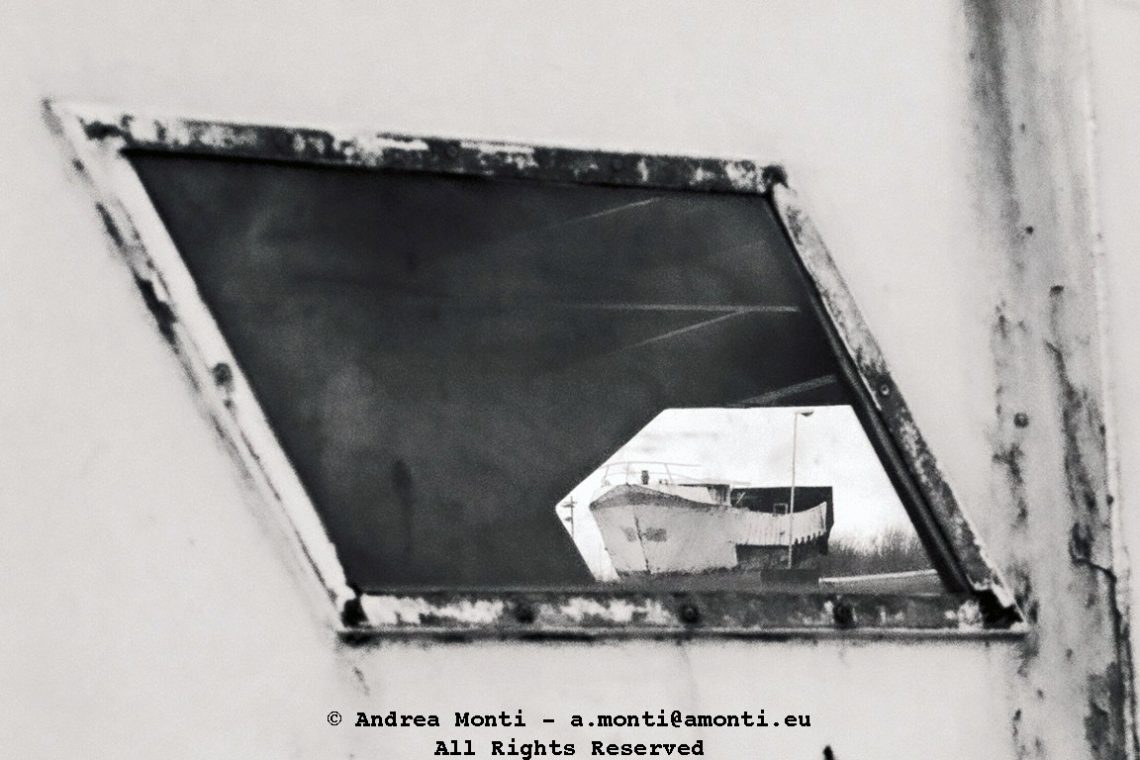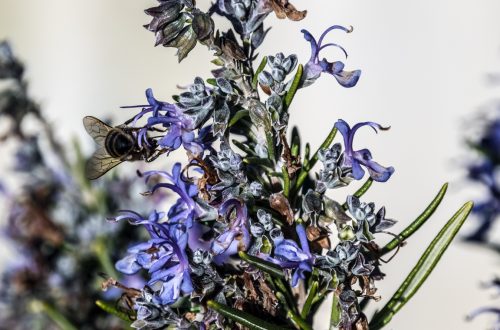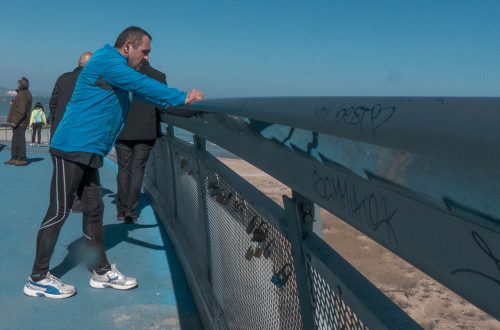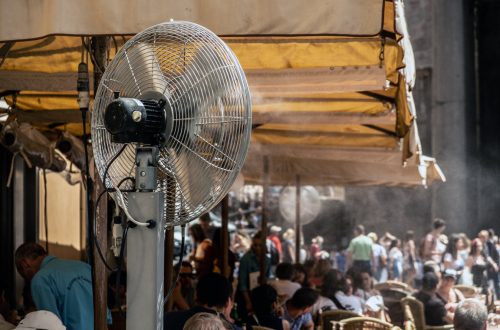
In-Eye
Photography has a curious way of leading the mind into patterns — an instinctive search for meaning, even when none exists. We are hardwired to interpret shapes and juxtapositions, to anthropomorphise objects, to find faces in clouds and stories in shadows. This image is one such case: a seemingly simple shot of a ship seen through a weathered window, yet the geometry conspires to suggest something far more figurative.
Here, the diamond-shaped porthole becomes an eyelid, its corroded frame the brow, and beyond it, the bow of the ship forms an unmistakable iris and pupil. It’s a quiet trick of composition — one I noticed only after the fact — that turns industrial decay into an almost human gaze. There’s no grand narrative here, yet the framing invites one.
From a technical standpoint, the image leans on strong compositional control. The porthole frames the subject precisely, guiding the viewer’s eye without distraction. The ship’s placement — slightly off-centre within the internal frame — avoids static symmetry, adding subtle dynamism. Exposure is balanced to hold detail in both the shadowed interior of the frame and the bright hull outside, a tricky range that could have easily lost nuance in either extreme. The choice of monochrome intensifies texture, drawing attention to the corroded metal and the tonal play between window glass and sky, while stripping away any colour cues that might have softened the composition’s starkness.
Ultimately, this photograph is a reminder that the act of framing does more than isolate a scene — it creates the potential for meaning, even from elements that were never meant to hold it. The “eye” here isn’t in the ship, nor in the window. It’s in the viewer, connecting shapes, finding familiarity in the abstract. And perhaps that’s the quiet magic of photography: it teaches us not just to see, but to interpret.




